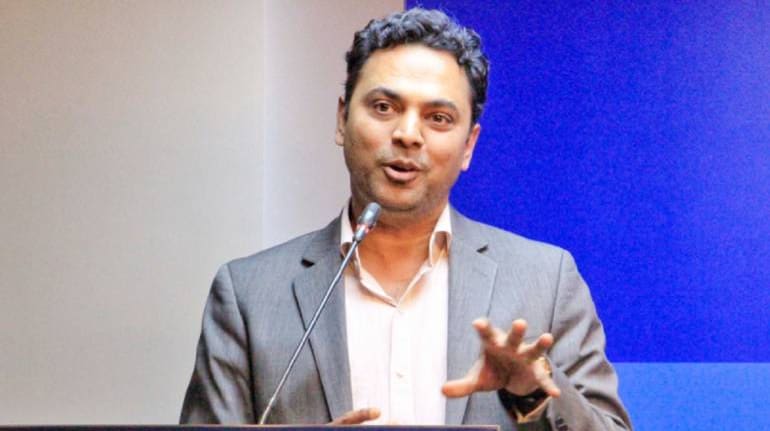In terms of outlook going forward, Subramanian said a few sectors clearly demonstrate the V-shape recovery
India is witnessing a V-shaped recovery as the economy unlocks after the COVID-19 necessitated lockdown, Chief Economic Advisor Krishnamurthy Subramanian said.
Speaking to CNBC-TV18, Subramanian said indicators point to a V-shaped recovery.
On the outlook in terms of revival and recovery, Subramanian emphasised that the GDP fall was expected due to the global COVID-19 pandemic, noting that the number of countries registering decrease in per capita GDP this year “is the highest in one-and-a-half century.”
“The April-June quarter (Q1) especially was a time when the global and Indian economy was in lockdown with several restrictions on economic activity and this is not entirely unexpected. In terms of outlook going forward, we have been witnessing a V-shaped recovery as the economy has been unlocked and a few sectors clearly demonstrate that,” he said.
Adding: “If you look at industrial output, the core sector which had declined by 38 percent in April, has progressively become better with July recording 9.6 percent — earlier months May and June being 22 percent and 13 percent, respectively. This is indicative of a V-shaped recovery.”
He also pointed out that railway freight has been at 95 percent compared to last year's level in July and 6 percent higher in August; while e-way bills are almost at 99 percent of August 2019 levels, is despite local lockdowns which affect inter-state trade.
“Clearly these indicators are pointing to a V-shaped recovery. And that is why the outlook I have is of this V-shaped recovery continued,” he added.
When asked whether recovery would continue as a Finance Ministry note itself called this recovery fragile, and it has been credited to lifting of lockdown and pent-up demand, Subramanian said the “magnitude is becoming progressively better.”
“Even if some indicators are still in negative territory or below last year's levels, the trend is one of V-shaped recovery,” he emphasised.
Subramanian also acknowledged that there is “no denying the residual uncertainty” as we do not know when the pandemic will end. “Uncertainty is being caused by health factors - not economic factors and thus some of the residual uncertainty will persist until the time that the pandemic is brought under control. But, the worst is over and V-shaped recovery can continue in unlock period,” he added.
On expectations from the government, Subramanian said that the government has responded in doses as “the pandemic will ebb and flow.”
“Along with the government, the Reserve Bank of India (RBI) has come up with another dose on the liquidity side. They are together working to ensure that periodic doses are provided while acknowledging that this will continue for some time. Pandemic will only come in control when we have a vaccine and life is back to normal,” he said.
When asked whether we should be reconciled with negative GDP numbers even in Q2, Q3 and Q4, Subramanian said it depends on how the pandemic evolves. "The uncertainty and impact is coming from the pandemic and lockdowns that it required. Till the pandemic uncertainty remains the impact on discretionary spending on demand side will remain. In a large economy like India consumption accounts for 60 percent of GDP,” he pointed out.
He also acknowledged that the government would have to borrow more.
"(There is) no denying that the government will have to do more borrowing and remains ready to do what is required in the borrowing programme to ensure that the necessary expenditure is funded. Private sector unlikely to step in in such times and that's why investment gap will have to be filled by the public sector (sic),” he said.
On the consumption side, Subramanian felt there is a case for looking at sectors where the marginal propensity to consume is greater.
“Such sector could have an opportunity for short term stimulus. But in sectors with 75-80 percent decline, that gap is harder to fill,” he added.
Subramanian did not confirm whether an MNREGA-like programme could be in the pipeline for the urban poor, but said he could make a case for it "as an academic."
In its worst economic contraction ever, India posted a staggering 23.9 percent fall in gross domestic product (GDP) in Q1FY21. Most experts and analysts had expected GDP numbers to slump by around 19.6 percent, CNBC-TV18 said.
As per the central statistics office (CSO), the manufacturing sector saw a 39 percent contraction, followed by 38.1 percent slump in the industrial sector and 20.6 percent in the services sector. Private consumption, which reflects household spending, declined a massive 27 percent year-on-year.
In line with expectations, the agriculture sector bucked the trend, and posted 3.4 percent growth for the quarter (Q1FY21).







